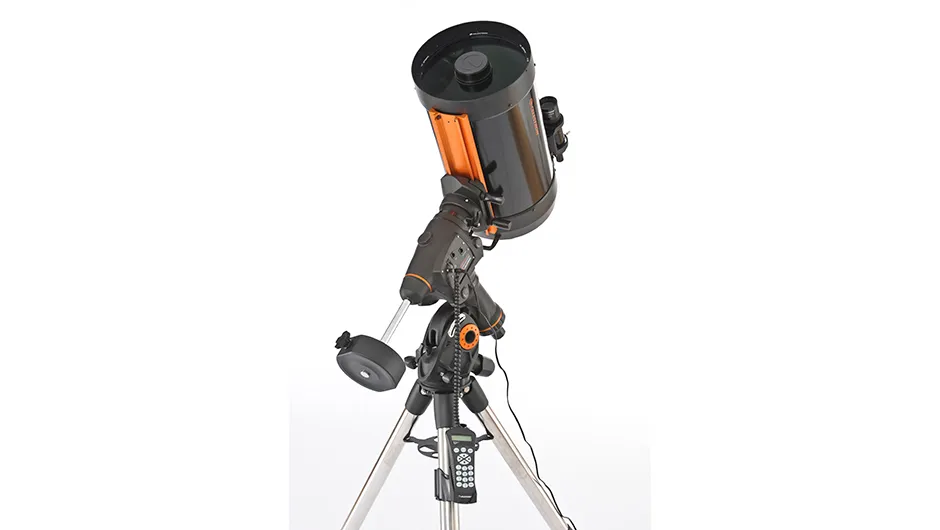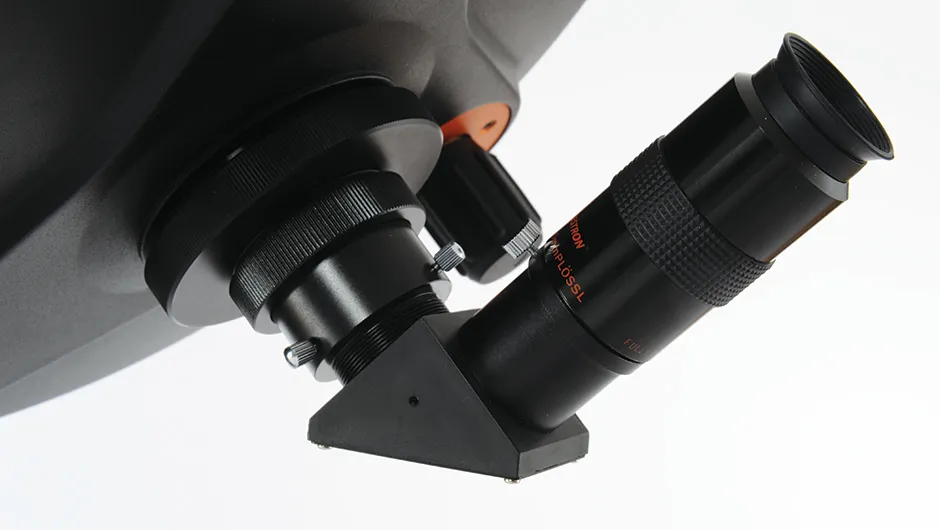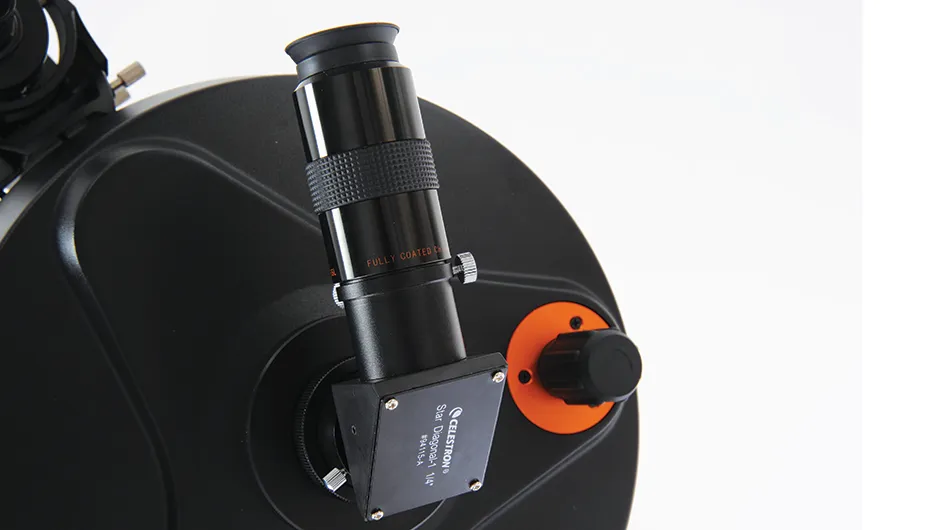Price: £2749.00
Aperture: 280mm (11 inches)
Focal Length: 2,800mm (f/10)
Eyepieces: 40mm, 1.25-inch fit
Finderscope: 9x50 finder
Mount: CGEM equatorial Go-To
Weight: 54.43kg
Supplier: David Hinds Ltd
Telephone: 0845 2604770
Website: www.telescopesplus.co.uk
Celestron has introduced a new mid-range mount combined with high quality Schmidt-Cassegrain tubes to form the CGEM series.
The CGEM 1100 is at the top end of the scale, with an 11-inch optical tube.
The telescope and mount are aimed at moderately skilled astronomers, but they can certainly be appreciated by beginners and there is plenty to sink your teeth into if you’re more serious.

The CGEM mount is a delight to use because Celestron has been careful to incorporate simple yet useful features.
These include large easy-to-grip knobs for most of the basic mount adjustments, such as getting the scope polar aligned.
You’ll need your own power supply, but the CGEM comes with a power cable that has a car cigarette lighter adaptor at one end.
At the other end, the cable can be screwed into place on the mount to stop it from coming loose during operation.
All-star alignment
Any Go-To telescope has to be able to find the object it’s directed to, point at it accurately, and keep it centred.
The key to getting good accuracy comes down to the basics: levelling the mount and making sure the polar alignment is as accurate as possible.

Although the CGEM doesn’t come with an in-built polar alignment scope, we found you don’t need one thanks to Celestron’s ‘All-Star alignment process’.
This is one of the great innovations of the NexStar hand controller.
With it, you select a star, ask the mount to go to where it ‘thinks’ that star should be, then you adjust the actual mount itself to place the star in the centre of the eyepiece.
Once you’ve done that, the mount is polar aligned and you get longer spells of uninterrupted viewing and improved deep-sky imaging.
The process worked very well, and coupled with other options for adding even more accuracy to pointing the telescope, we found the whole system very effective to use.
The NexStar hand controller is intuitive to use and took care of the finer points of the setup process once the mount had been levelled and roughly aligned.
We found that aligning the scope on two stars was usually enough to allow the Go-To functions to work well for visual use.
A welcome addition to the 40,000-strong list of objects in the handset’s database are categories such as CCD objects for astro imaging, Abell objects (galaxy groups), and asterisms.
These are a great complement to the usual Messier and NGC/IC catalogues, double stars and planets categories.
The Schmidt-Cassegrain tube comes with enhanced multi-layer StarBright coatings on both the primary and secondary mirrors, and we saw virtually no internal reflections from bright stars, planets or the Moon.

Our field of view test using the star Regulus gave a pinpoint result across 85 per cent of the 0.61º-wide view, with only slight distortion as we reached the edge.
Turning to the double star Algieba nearby, we were able to split it cleanly using the supplied 40mm eyepiece, and adding our own 2x Barlow gave a clear black space between the two components.
We then found another double whose components were closer together – Otto Struve 288 in Boötes, with a separation of just 1.1 arcseconds.
With our own 26mm eyepiece plus a 5x Barlow, we split it in moments of steady seeing. Saturn was sharp at 70x magnification, and even though its rings were nearly edge-on they were still plain to see.
We also identified at least seven moons.
A few nights later we had exceptional skies and pushed the magnification up to 538x with the help of our 5x Barlow.
Saturn was stunning with pale brown bands and a pastel yellow hue to the disc.
The deep sky beckoned and M51, the Whirlpool Galaxy, looked very good, while M82, the Cigar Galaxy, was equally impressive.
Meanwhile the globular clusters M3, M13 and M5 felt as if you could fall into their masses of stars.

Stars, camera, action
We arrived at the Dumbbell Nebula, M27, late into the night, but it was well worth staying up for: it loomed large, with detail and faint stars across its disc.
Open cluster M11, the Wild Duck Cluster, had a wonderful fan of stars sparkling against the night.
Using our own adaptor we attached a Canon 50D camera to the eyepiece and with a little practice we found that we could get good pictures of all types of objects with relatively short exposures.
We could see that by adding an autoguider and guide scope, the CGEM 1100 would be a great imaging system with lots of potential.
Overall, the CGEM 1100 is an excellent addition to any astronomer’s arsenal.
With its long focal length of 2,800mm, it gives great magnification of many deep sky and planetary objects.
Yet the whole system is just about portable enough for it to be a valuable asset, whether imaging or visual use is your thing.
The only real niggle was that it would have been nice to have seen a dew shield and polar alignment scope included for the price.
This article appeared in the July 2009 issue of Sky at Night Magazine